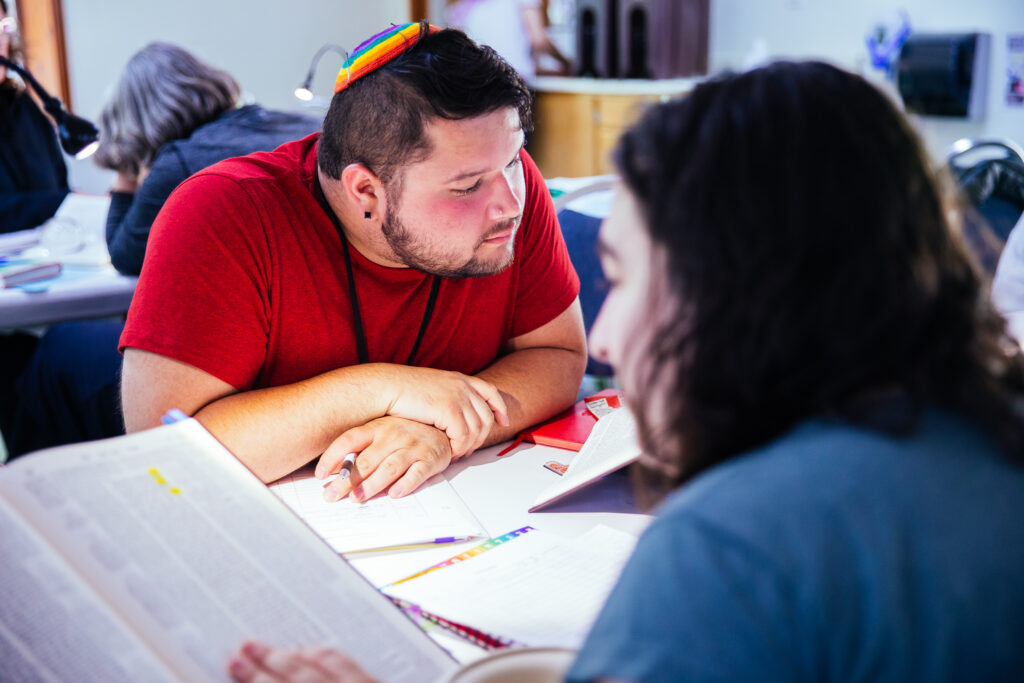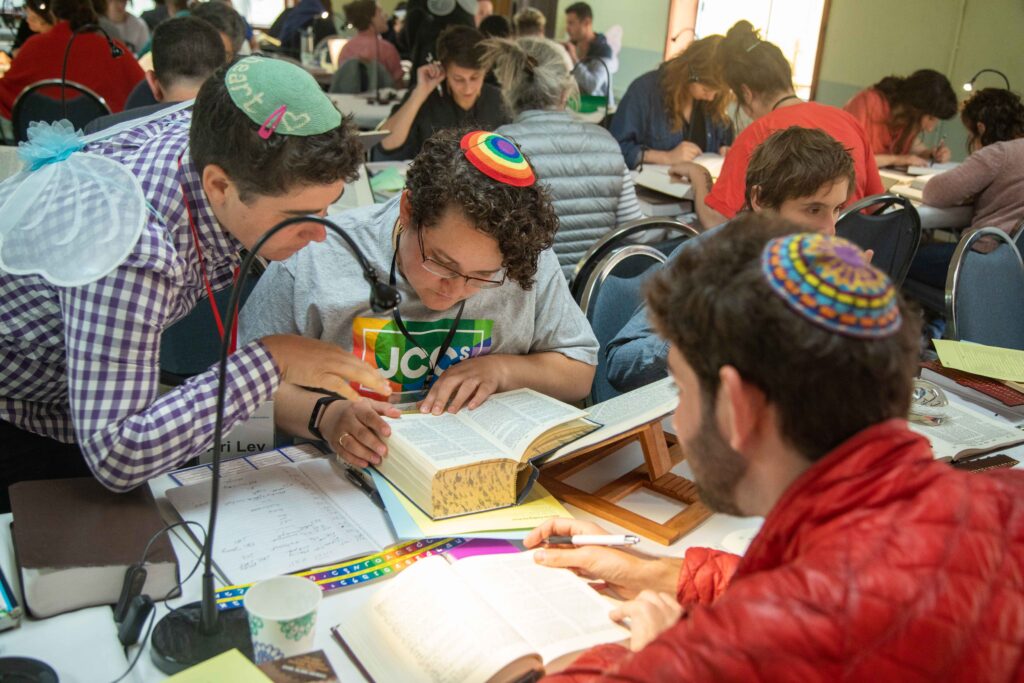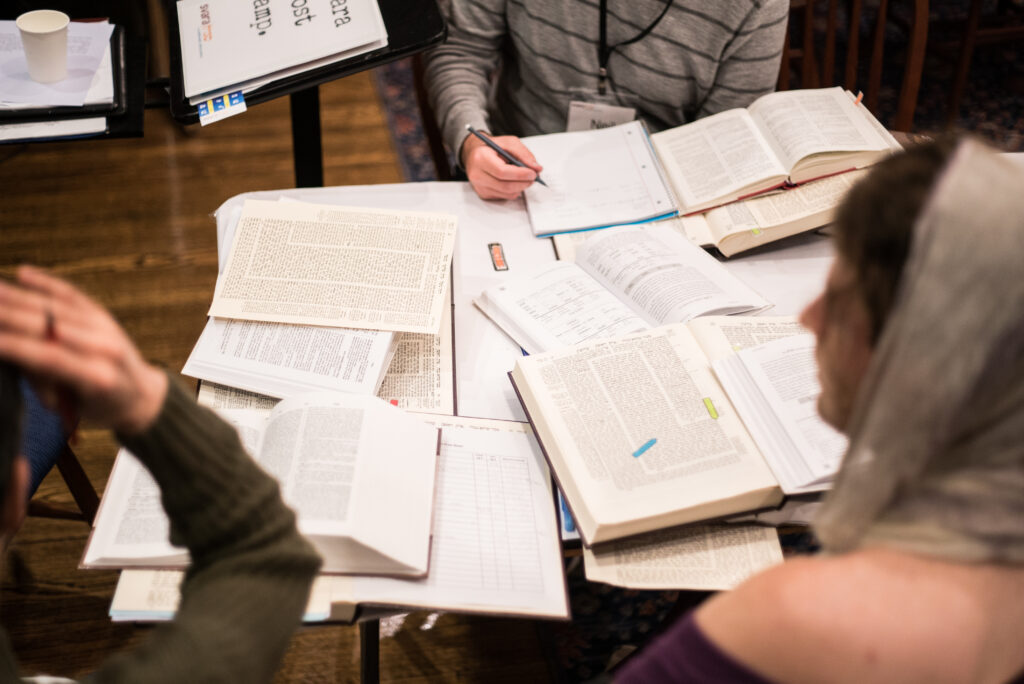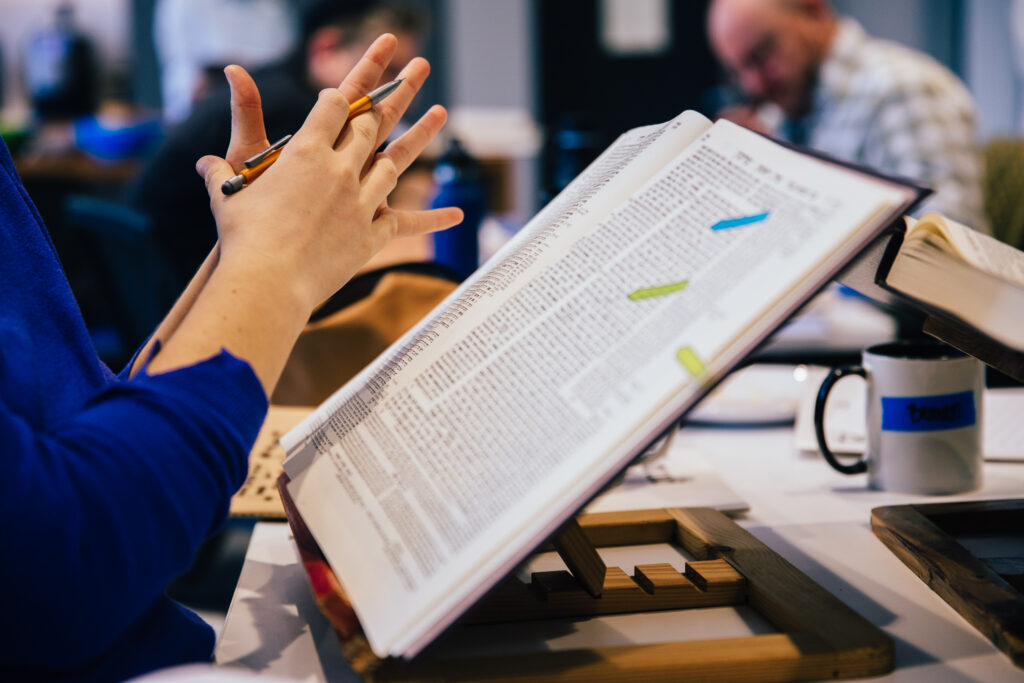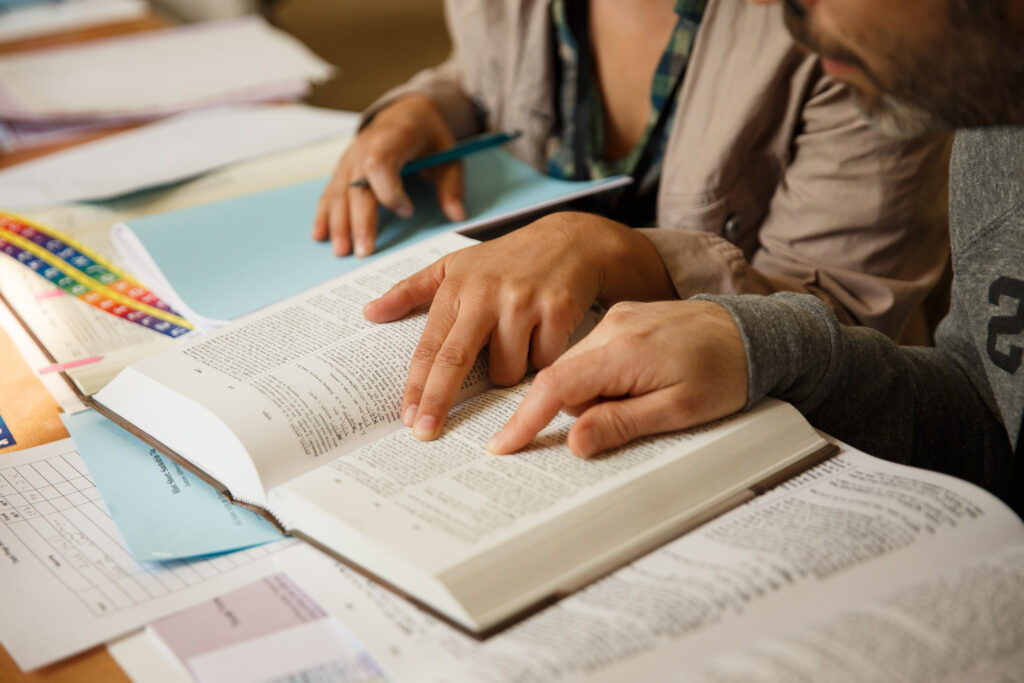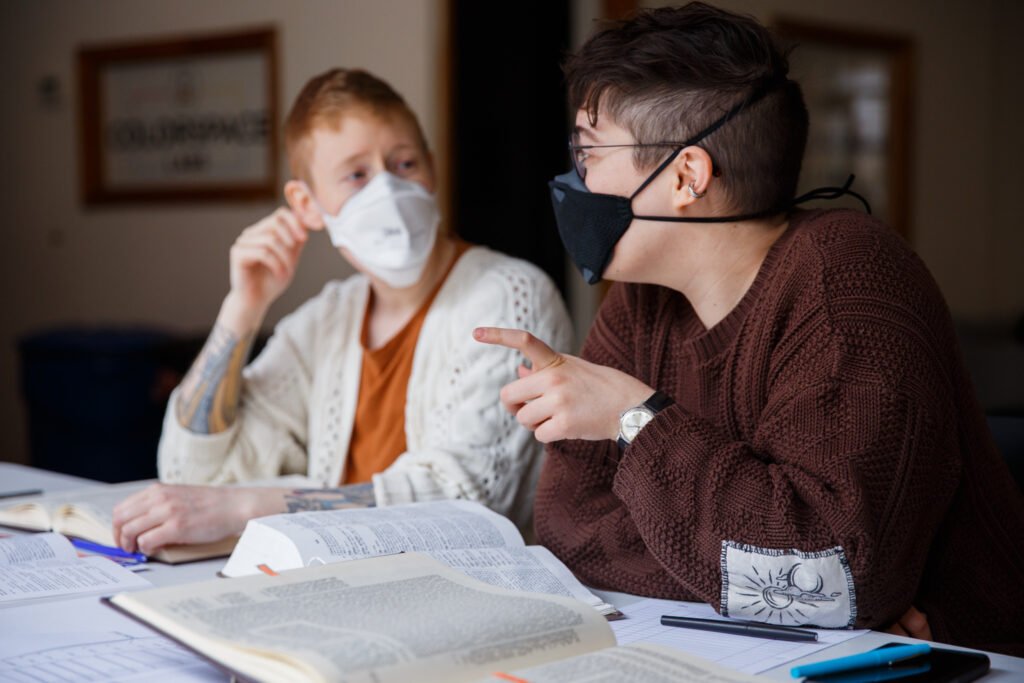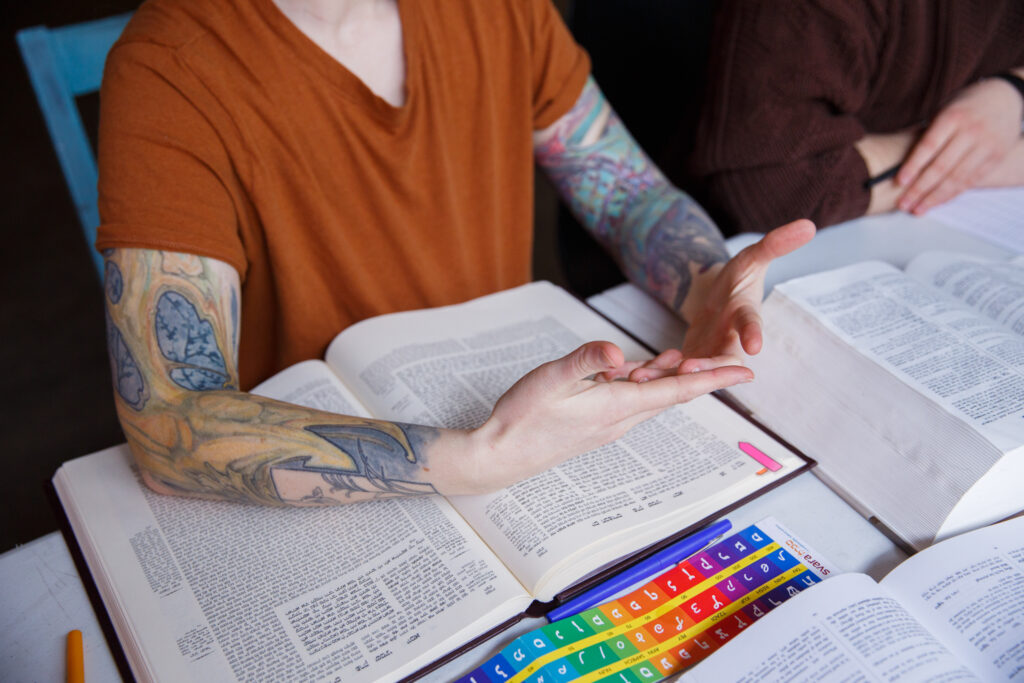Hanukkah is here, wagging its annoying tail and jumping its big old muddy self up on folks like me who don’t care for it one little bit. Down, boy!
For many years I was one of the congregational leaders for a wonderful Jewish Community in the salty, foggy, little town of Half Moon Bay, tucked away on the northern California coast. Included in my duties were leading services, offering pastoral care, and running the religious school. At my original interview I told them I would only take the job if the religious school included parents. Quizzical looks crossed the faces of the board members who were grilling me. I felt strongly that parents and kids should learn together—if the parents were already knowledgeable, they could help teach; and if they weren’t, well then they darn well better be learning right alongside their children, because, I said, “I’m not running a conversion program for minors.” They had no other prospects, so begrudgingly they agreed and I was hired.
On the first day, I had one of the only “just for parents” meetings I ever held, in which I told them, “Look, I don’t care if you drive on shabbat, if you eat trayf, or who you are married to. What I care about is that you have integrity. I don’t care what you decide to do or not do Jewishly in your family. My job is to help all of us explore and learn, and if along the way you find out what is meaningful for you and your kids, everyone will get an A.” They were initially a little miffed that they didn’t get to drop off their kids and then go drink a latte and read the paper for a couple hours. But by the end of the first year, the parents were fully on board.
My pedagogic methods and religious opinions were, uhem, unorthodox. But so was this community that supported a wide spectrum of Jewish identities, practices, backgrounds, and affiliations. So, it turned out to be a good shidduch. That is, of course, until we got to Hanukkah. My sideways take on that universally beloved (and exceedingly assimilated) holiday was a shock to the entire school. But they were stuck with me, and so they endured.
One year I was dubbed “The Grinch who stole Hanukkah” by one delightfully snarky 5th grader. By this time the parents knew what to expect from me, more or less. But that year, 2008, war was everywhere—Iraq, Somalia, Afghanistan, Gaza, and Georgia are the places that especially come to mind. As I prepared for teaching Hanukkah that year, I was struck that over the past few thousand years, our species has made pitiful little progress in effectively settling our disputes without employing wanton violence. This being top of mind, my teaching that year was particularly animated. In a pedagogic fever, I must admit that I assaulted my poor students’ young and tender ears with the REAL story of Hanukkah as found in Maccabees 1 & 2, not that smarmy Peter, Paul, and Mary version.
Basically, in my world view, there are two competing approaches to the origins of this pesky holiday. On the one hand there is the pseudo-historical scriptural version found in Maccabees 1 & 2, which is horrific on pretty much every level, and on the other hand there is the creative repurposing given to that story by the Talmudic Rabbis. Tellingly, the scriptural version is not found in the Jewish scriptural canon—biblical scholars offer many an interesting answer for this omission. Some suggest it got cut because it is a younger text and it missed the deadline. Others say it might not have been originally written in Hebrew, or maybe it’s because of the friction between the Sadducees and the Pharisees. Whatever the reason, the fact remains that it got left on the cutting room floor.
My svara tells me that it got jettisoned because it aggrandizes the barbaric behavior of “the Maccabees,” a group of brutal and ruthless religious zealots, who went on to sire a decadent and power-drunk dynasty, the Hasmoneans, who traumatized the region and the Jewish people for over a century. I think the Rabbis who canonized Jewish scripture had had enough of their corrupt and nasty ways, and basically canceled them. Well, almost…. And that was top of mind when I went in to teach that fateful Sunday.
“But Jhos,” my students protested, “Weren’t the Maccabees heroes? Didn’t they fight for freedom? Weren’t they the good guys?” My answer was usually something like, “GRRRAWWWWRRRRRR!!! No, no, and NO!!” And then I launched into recounting the following passage, to the horror of their parents:
In those days arose Mattathias the son of John, the son of Simeon, a priest of the sons of Joarib, from Jerusalem, who dwelt in Modin, and he had 5 sons—and one of them was Judas, whose nickname was HaMaccabee, which means “The Hammer”. When he saw that Jewish people in Jerusalem were doing things that weren’t “kosher” he said, “Woe is me!! Why did I have to live to see the misery of my people and our holy things in the hands of strangers!! He got up on a soap box and started preaching about how he’d rather die than give up his religious practices and he worked himself up into a fever. Just then a Jewish guy came by who was doing a very not Jewish thing (a little like eating a bacon cheeseburger), and Mattathias basically melted down, and he ran after the guy and killed him, right there in broad daylight. (1 Maccabees 2:1-26, my super outside interpretation.)
A few of them, more or less, burst out in tears, while others threw their hands up in the air, waving wildly, with excited questions all but bursting from their lips. Parents were giving me the hairy eyeball, but their curiosity was clearly piqued. One kid challenged me with, “He killed him for EATING A BACONCHEESEBURGER?!?”
“OK, it was a little worse than that. He was sacrificing, probably a pig, in a very not-Jewish temple.”
Another kid, aghast, said, “He KILLED a PIG!?! I love pigs! He should have at least been put in jail. Go Mattathias!!”
“Well, everybody killed pigs back then!! Are you a vegetarian?” I asked, eyebrows raised.
“No.”
“Well then you need to walk that back a bit, buddy.”
One of the parents gingerly jumped in the fray, “So Jhos, are you saying that according to the scriptural account, which I understand is not in the Jewish bible, that the Maccabees killed a Jew?”
“Yeah! Right off the bat, that’s actually what starts the whole thing.”
Shock and disappointment hung in the air.
We dove in, exploring the difficult and troubling parts of the story. When it got too grisly the more tender kids would get to go outside to revive in the fresh air periodically. I fielded their questions, and filled in the parts of the story that are messy, rough, and unsettling. And after about 40 minutes, most of the room had flipped. Now they hated Hanukkah. It was yucky. The Maccabees were horrible. Some said, “I don’t want to be Jewish.” One of the parents put two and two together and asked “Wait. If this story doesn’t exist in the Torah, then why do we celebrate it at all?” “BAM!! Good question!”, I shouted. Cuz, like the Grinch, I too had a happy ending up my sleeve.
“So, here’s the deal friends….” I started and proceeded to tell them the story of how the Rabbis saved Hanukkah.
מַאי חֲנוּכָּה? דְּתָנוּ רַבָּנַן: בְּכ״ה בְּכִסְלֵיו יוֹמֵי דַחֲנוּכָּה תְּמָנְיָא אִינּוּן דְּלָא לְמִסְפַּד בְּהוֹן וּדְלָא לְהִתְעַנּוֹת בְּהוֹן. שֶׁכְּשֶׁנִּכְנְסוּ יְוָוֽנִים לַהֵיכָל טִמְּאוּ כּל הַשְּׁמָנִים שֶׁבַּהֵיכָל. וּכְשֶׁגָּבְרָה מַלְכוּת בֵּית חַשְׁמוֹנַאי וְנִצְּחוּם, בָּדְקוּ וְלֹא מָצְאוּ אֶלָּא פַּךְ אֶחָד שֶׁל שֶׁמֶן שֶׁהָיָה מוּנָּח בְּחוֹתָמוֹ שֶׁל כֹּהֵן גָּדוֹל, וְלֹא הָיָה בּוֹ אֶלָּא לְהַדְלִיק יוֹם אֶחָד. נַעֲשָׂה בּוֹ נֵס וְהִדְלִיקוּ מִמֶּנּוּ שְׁמוֹנָה יָמִים. לְשָׁנָה אַחֶרֶת קְבָעוּם וַעֲשָׂאוּם יָמִים טוֹבִים בְּהַלֵּל וְהוֹדָאָה.
What is Hanukkah? The Sages taught: On the twenty-fifth of Kislev, the days of Hanukkah are eight. One may not eulogize on them and one may not fast on them. When the Greeks entered the Sanctuary they defiled all the oils that were in the Sanctuary. And when the Hasmonean monarchy emerged victorious over them, they searched and found only one cruse of oil that was placed with the seal of the High Priest. But there was enough to burn for only one day. A miracle occurred and they lit it for eight days. The next year the Sages instituted those days and made them holidays with praise and thanksgiving. (Babylonian Talmud, Shabbat 21b)
“Wait, so they just make it up?” asked one very dejected child.
“Yes!!”, I excitedly answered. Isn’t that amazing!?!”
Because, though the Rabbis are constantly making things up, in this case their wisdom is particularly powerful for me. Here they find a way to acknowledge the totality of what it means to live through all kinds of oppression–internal and external. They recognize both the brutality and the improbable military victory encompassed by the problematic chronicle, and deftly shift the focus away from the Maccabees altogether in two sentences. They don’t exactly sugar coat it, just redirect the focus. Like moving one’s eyes from the subject to the background of a painting, where all the context lies. Or instead of getting tangled in the content of a dispute, we look for the piece of information we lack to understand our opponent’s point of view. Here the Rabbis, who were often themselves subject to extreme oppression and persecution, pull off a magnificent feat of spiritual resistance through some expert yarn spinning. It is concise–a genius, virtuosic even, example of the power of a narrative slight of hand. Not an outlandish fabrication, subtle in fact. I mean, it could even be true. They elaborated just enough to turn an extremely murky, dank and ugly tale into a sacred reason to bring warmth, light, and creativity into our Northern Hemispheric lives at its coldest, darkest, and most dormant time. Tweaking the facts, altering our stories, and pulling on the heartstrings of the public through our epics and tales is, and always will be, a dangerous business where humans are concerned. On the one hand we must be scrupulous with our words, and on the other hand when a story perpetuates hatred, fear and violence maybe a little editing is in order. Intention is everything. The Rabbis, in this instance, jammed the wheels of destructive power, by turning their attention to a simple, easily overlooked act, thereby awarding the victory to what is inexplicable, magical, and inspiring. And this is, and always will be the real miracle of Hanukkah for me.
In honor of our radical, life affirming, tai chi’ing, ancient Sages, who themselves lived in a painful and broken world, may we find the creativity and courage to welcome in beauty, redemption, compassion and a little good natured chutzpah this Hanukkah.

